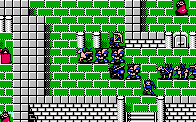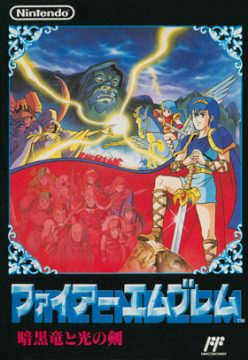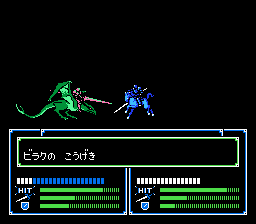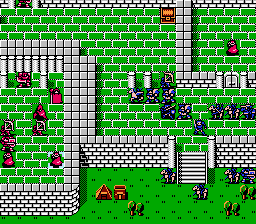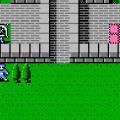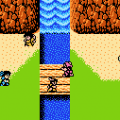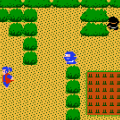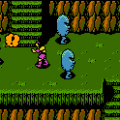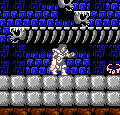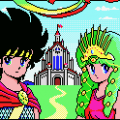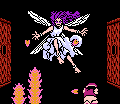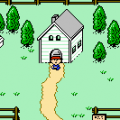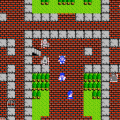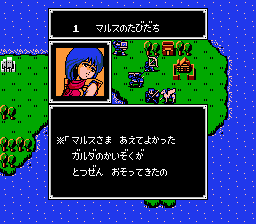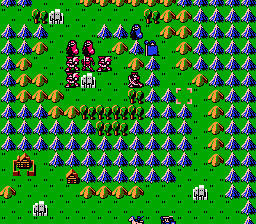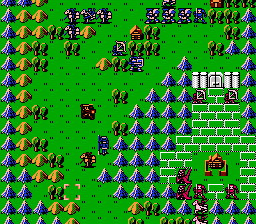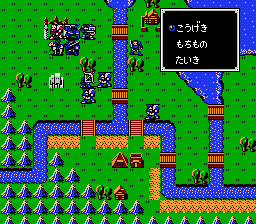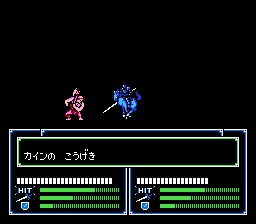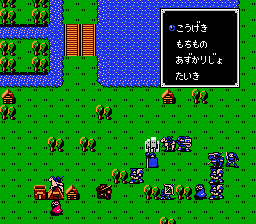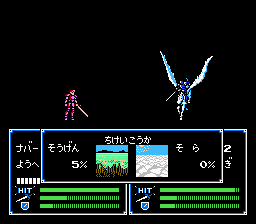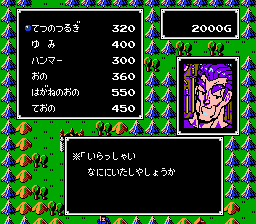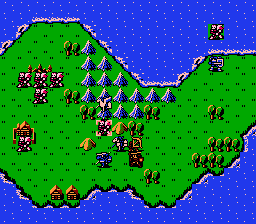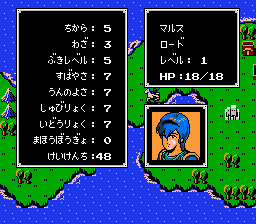- Fire Emblem (Introduction)
- Fire Emblem: Ankoku Ryu to Hikari no Tsurugi
- Fire Emblem Gaiden
- Fire Emblem: Monshou no Nazo
- Fire Emblem: Seisen no Keifu
- Fire Emblem: Thracia 776
- Fire Emblem: Fuuin no Tsurugi
- Fire Emblem (GBA)
- Fire Emblem: The Sacred Stones
- Fire Emblem: Path of Radiance
- Fire Emblem: Radiant Dawn
- Fire Emblem: Shadow Dragon
- Fire Emblem: Shin Monshou no Nazo
- Fire Emblem Awakening
- Fire Emblem: Fates
- Fire Emblem Echoes: Shadows of Valentia
- Fire Emblem (Misc)
Thousands of years ago, dragons and humans lived in harmony on the continent of Akanaea. But this peace was brought to an end by the evil Medeus, the leader of a race called Manaketes (human/dragon hybrids that can change forms). The humans fought valiantly, until the hero Henry came forth, wielding the legendary Falchion sword, and slayed Medeus. And all was well for another hundred years, until Medeus came back to life. With the help of the evil wizard Gharnef, the Manaketes slowly began spreading their influence, taking over the country of Doluna, and once again waged war on the land of Akanaea. But Medeus’ primary objective was to hunt down and slaughter the descendants of Henry.
This includes Prince Marth, the heir to small nation of Altea. Marth flees to a remote island, leaving his family and his heirloom – the legendary Falchion – behind. But the Dolhran army has found and cornered him, and the only thing he can do is fight back and save his country.
Characters
Marth
Prince of the small kingdom of Altea and main character of the game. He is the only Lord class unit in your control. His name has been translated several ways (including “Mars” and “Matus”) with “Marth” being Nintendo of America’s official translation. All of the allied units are colored blue on the map, hence the blue hair, which has become a trademark among Fire Emblem heroes.
Caeda
The princess of the island nation of Talys and Marth’s major love interest. Caeda is a skilled Pegasus Knight and wields a silver tongue, as she convinces more enemy units to join your cause than any other character. Better known as “Sheeda” to fans of the series before it took off overseas.
Elice
Marth’s older sister. She’s the sole unit capable of using the Ohm staff, which can raise a fallen unit from the dead.
Nyna
The princess of Archanea. Spared by a Grustian general, the infamous Black Knight Camus, Nyna found sanctuary in the Kingdom of Aurelis.
Hardin
The King of Aurelis and a capable Cavalier. He joins Marth’s cause when Grust invades his nation. He may seem like a minor character out of the many you’ll recruit, but he’s crucial to Fire Emblem 3.
Tiki
The last descendant of Naga, the God Dragon. She is a Manakete, capable of using ancient stones to morph into a dragon. She hasn’t fully matured and cannot harness the true power of the God Dragon Stone yet.
Gharnef
The evil priest that revived Medeus. He wields powerful dark magic that can only be defeated by an ancient, holy spell known as Starlight.
Fire Emblem: Ankoku Ryu to Hikari no Tsurugi (“The Dragon of Darkness and Sword of Light”) is the bedrock on which the franchise was born. Marth and his army proceed through twenty-five maps, defeating enemies, finding new comrades, buying weapons and capturing castles, all to re-obtain the Falchion sword and kill Medeus. The plot is mostly limited to small conversations at the beginning and end of each stage, but it’s still more detailed than many 8-bit RPGs.
Using the same basic engine as the Famicom Wars games (predecessor to Advance Wars), the interface looks and feels a bit spartan. There’s no visible indication on how far a unit can move, and you need to pull up some menus to look at stats instead of them popping up when units highlighted. The cursor movement is sluggish, the characters shuffle slowly around the map, and the ground beneath them often remains green even when stepping on other terrain (like water). The battle backgrounds are stark black, and while the combatants are relatively well animated for a NES game, they’re a bit slow and boring. You can shorten these sequences in the options, thankfully.
In spite of these setbacks, Fire Emblem is a surprisingly engrossing game. The graphics are fairly bland, but the music quality is pretty good by NES standards, and it’s especially cool when the music changes once the tide of the battle turns in your favor. While the weapon triangle found in the later games hadn’t yet been implemented, and there’s only one class of magic, there are 25 potential player characters and a total of 21 classes. Certain terrain effects are more important than in any other game in the series – you can scale walls and you’ll find one-way hills that units can climb down, but cannot get back up. Because of this, it really feels like units’ classes are more important than their stats, because troops like Pegasus Knights can ignore these terrain effects. There’s even a mid-game save option, which was quite a luxury for back in the day.
The story of Fire Emblem was retold as part of the first “chapter” in Fire Emblem: Monshou no Nazo for the Super Famicom, featuring updated graphics and better interface. It’s especially nice to be able to see how far units can move. It’s fairly true to the original, but a few characters and maps have been cut from the roster, with a total of twenty maps versus the twenty-five of the original, and some levels have been altered a bit. There’s only a bit more dialogue, but the chapter openings are a nice touch. The game was then completely remade for the Nintendo DS, under the name Shadow Dragon, which will be covered later on. The Famicom original is rendered somewhat obsolete by these, but it’s still worth checking out for curiosity’s sake.
